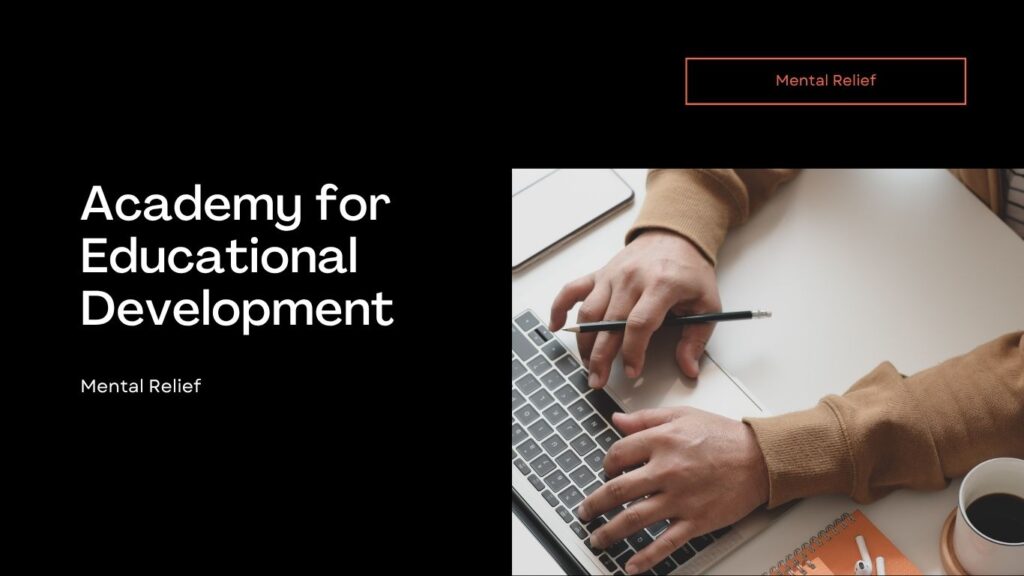Introduction
Education is the foundation of progress, innovation, and global peace. Around the world, millions of people rely on institutions that work to improve learning systems and expand access to quality education. One such influential organization is the Academy for Educational Development (AED) — a pioneer in advancing educational opportunities and promoting social development across the globe. Established with a vision to enhance education and foster human development, AED has played a major role in transforming learning systems in developing nations and supporting global education goals.
What Is the Academy for Educational Development?
The Academy for Educational Development (AED) was a nonprofit organization founded in 1961 in the United States. Its main goal was to strengthen education systems, promote community development, and improve the quality of life through knowledge and learning initiatives. AED worked with governments, private organizations, and international institutions such as USAID, UNESCO, and the World Bank to bring innovative solutions to educational and social challenges.
The organization focused not only on traditional schooling but also on adult literacy, youth empowerment, health education, digital learning, and gender equality in education. AED’s mission was clear — to empower people with knowledge, skills, and resources that could help them lead better lives.
Key Objectives of AED
The Academy for Educational Development operated with several strategic goals aimed at making education more inclusive, equitable, and impactful:

- Improving Access to Education:
AED worked to ensure that children, especially in low-income and rural areas, could access quality education. It launched community-based programs and built schools in underserved regions. - Teacher Training and Curriculum Development:
To improve learning outcomes, AED invested in teacher training and the development of modern, student-centered curriculums. This helped educators adopt innovative teaching methods suited to local needs. - Promoting Health and Social Awareness:
AED integrated health education, HIV/AIDS prevention, and nutrition awareness into school programs to ensure holistic community development. - Technology and Digital Learning:
The organization recognized the growing role of technology in education. Through digital literacy programs, online learning tools, and e-learning platforms, AED aimed to bridge the digital divide. - Youth Empowerment and Leadership:
AED believed in equipping young people with leadership skills, entrepreneurial knowledge, and community engagement training to prepare them for the global workforce.
Global Impact of the Academy for Educational Development
Over its five decades of operation, the Academy for Educational Development had a remarkable impact worldwide. AED implemented over 250 projects in more than 150 countries, focusing on education reform, social development, and capacity building.
In Africa and Asia, AED collaborated with local governments to build schools, train teachers, and develop literacy programs for women and children. In Latin America, the organization supported bilingual education and youth employment initiatives. In the United States, AED contributed to improving public schools and expanding access to early childhood education.
Its programs reached millions of learners and educators, creating sustainable change and improving the quality of life in many developing communities.
AED’s Role in Educational Innovation
AED was known for its innovative approach to problem-solving. It introduced data-driven education planning, community participation models, and interactive learning techniques long before they became global trends. The organization also promoted public-private partnerships to ensure long-term sustainability of its educational initiatives.
For instance, AED’s projects under USAID’s guidance emphasized evidence-based strategies to measure student performance, track school attendance, and evaluate teacher effectiveness. These innovations helped shape the education policies of several developing nations.

Challenges Faced by AED
Like many nonprofit organizations, AED faced operational and financial challenges. Managing large-scale international programs required consistent funding and transparent management. Eventually, AED’s operations were merged into FHI 360 in 2011 — another leading global development organization — which continues AED’s mission of improving education, health, and social well-being worldwide.
While AED as an independent entity no longer exists, its legacy and educational frameworks remain influential in modern development projects and academic policies.
Legacy of the Academy for Educational Development
The Academy for Educational Development left a lasting mark on the global education landscape. Its legacy lives on through:
- Empowered teachers and improved school systems.
- Millions of students who gained access to education.
- Stronger community engagement in educational decision-making.
- The ongoing work of FHI 360, which upholds AED’s principles of equity and excellence in education.
Today, AED’s approach serves as a model for future educational development projects that seek to combine innovation, inclusivity, and global cooperation.
Conclusion
The Academy for Educational Development was more than just an organization — it was a movement dedicated to empowering lives through education. Its focus on innovation, collaboration, and inclusivity continues to inspire modern educational initiatives worldwide. By promoting equal access to learning and supporting community-based programs, AED proved that education is not just a right but a powerful tool for transforming societies.
Even though AED merged into FHI 360, its spirit remains alive in every corner of the world where learning leads to hope, opportunity, and sustainable progress.
FAQs about the Academy for Educational Development
1. What is the Academy for Educational Development (AED)?
The Academy for Educational Development (AED) was a nonprofit organization founded in 1961 that focused on improving global education, health, and social development. It worked across more than 150 countries to strengthen education systems, promote community learning, and support sustainable human development.
2. What were the main goals of the Academy for Educational Development?
AED’s primary goals were to expand access to quality education, enhance teacher training, promote health awareness, and introduce technology-based learning. It aimed to empower individuals through knowledge and help communities overcome barriers to education and social growth.
3. How did AED contribute to global education?
AED launched hundreds of projects worldwide that built schools, trained educators, and created digital learning opportunities. It focused on youth empowerment, women’s education, literacy programs, and health education, improving the lives of millions in developing countries.
4. Does the Academy for Educational Development still exist?
The Academy for Educational Development merged with FHI 360 in 2011. Although AED as a separate organization no longer exists, FHI 360 continues its mission — advancing education, health, and development initiatives globally under the same vision and principles.
5. What is the legacy of the Academy for Educational Development?
AED’s legacy lives on through its contribution to educational innovation, equity, and community-based learning. Its models of teacher training, digital education, and local participation are still used by global development organizations to enhance learning outcomes worldwide.
